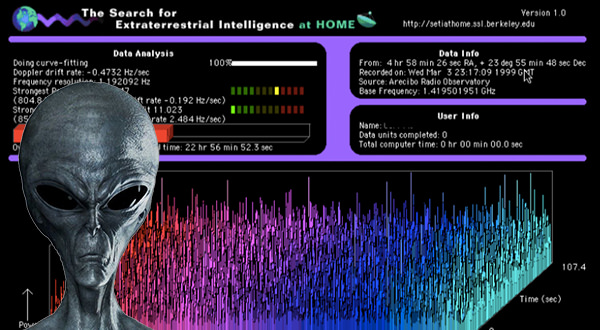After March 31, a bunch of amateur alien hunters will regain some personal computing power. The Berkeley SETI Research Center announced Monday that SETI@home, the two-decades-old crowdsourcing effort to hunt for signs of E.T. in radio telescope data using internet-connected computers, is shutting down at the end of the month.
One of the best ways to search for extraterrestrial intelligence is to listen for their radio signals. However, space is really, mind-bogglingly big. The Arecibo radio telescope in Puerto Rico and the Green Bank Telescope in West Virginia collected more data than the SETI project could process, so researchers turned to the ever-expanding collection of home PCs that sat idle much of the day.
SETI@home launched on May 17th, 1999, based on Berkeley’s BOINC distributed computing platform. Users would install the client, and it downloaded blocks of data to analyze when the system was otherwise unoccupied. You could control when SETI@home ran and how much computing power it used. It also came with a cool screensaver of the live data analysis. After the PC processed a block, it would upload the results to UC Berkeley scientists for review.
In a project update, the team said this “hibernation” is necessary because SETI@home has reached a point of “diminishing returns.” The team has collected so much data over the last 21 years, it’s time to sift through the backlog and turn it into usable research. This will eventually become a scientific paper. As of now, SETI@home is still running. However, the project will distribute the last data blocks to users on March 31st.
It’s unclear when or if SETI@home will relaunch for users. The team notes that other researchers at Berkeley might find a use for the massive network of computers already connected to SETI@home. If someone decides to launch a new project in the same vein as SETI@home, the project might begin sending out data blocks again.
This will no doubt come as a disappointment to people who have been running SETI@home for two decades, but there are other distributed computing projects in need of your CPU. The SETI@home team has directed interested users to its list of other BOINC-based computing projects like Asteroids@home, LHC@home, and more. There’s also the popular Folding@home project, which simulates protein folding and molecular dynamics to search for new drugs.





























